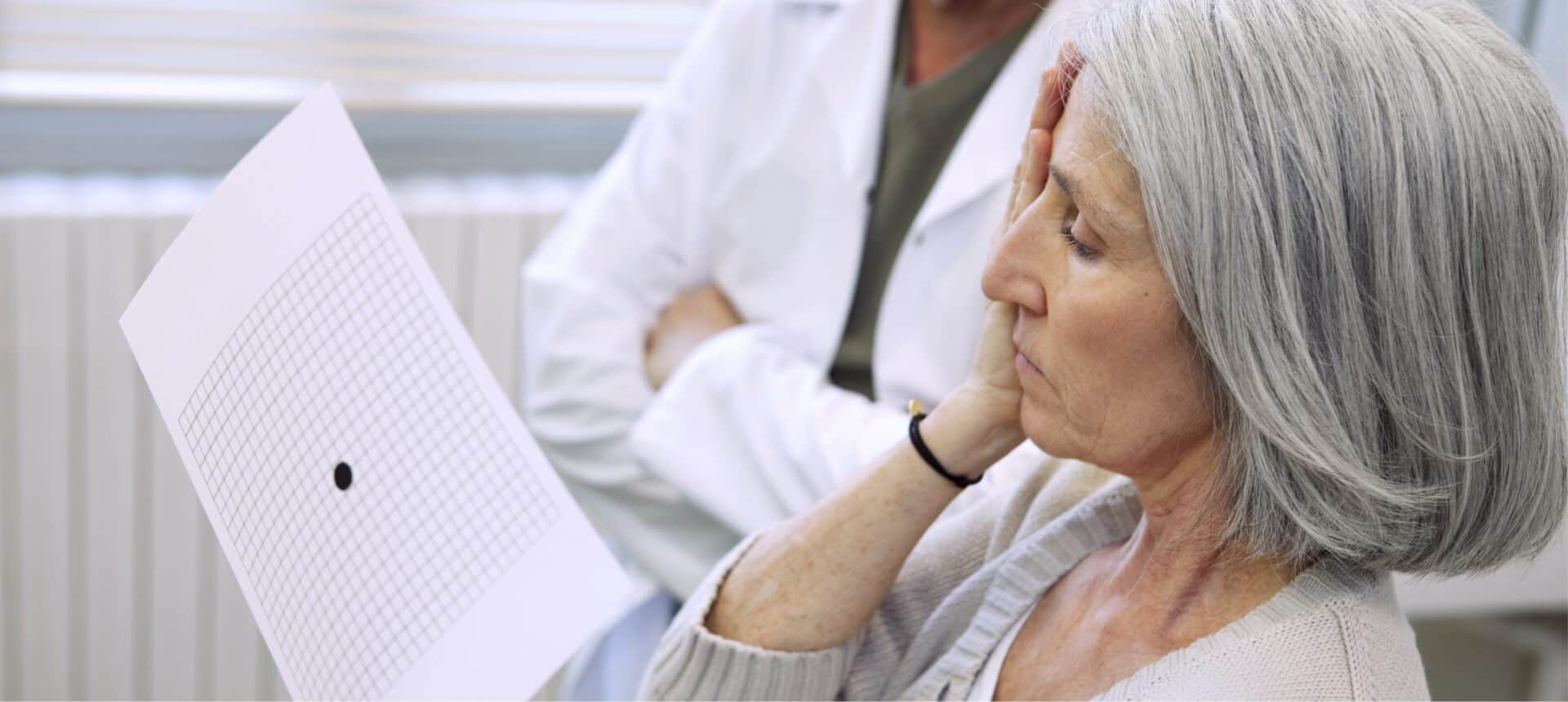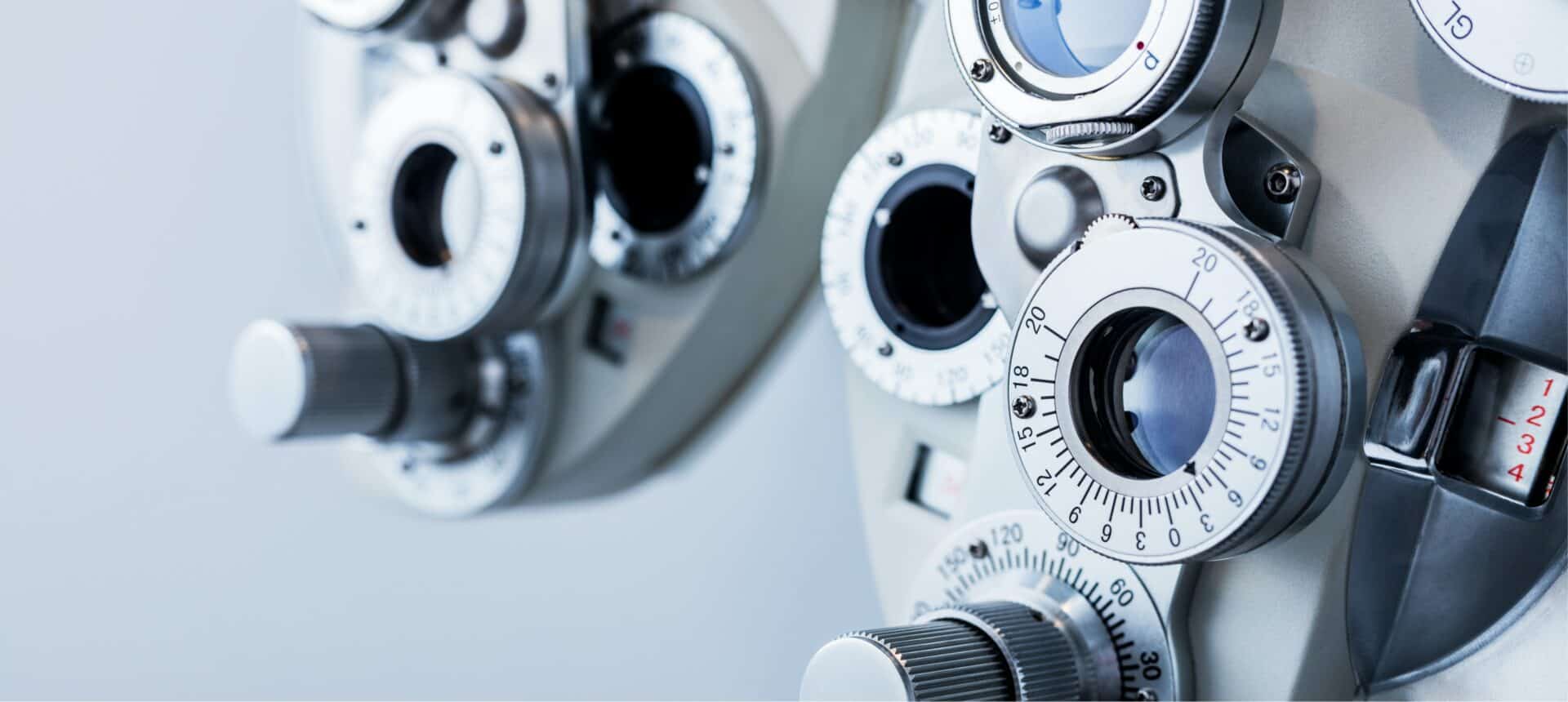Dry AMD
Dry age-related macular degeneration (AMD) is manifest either by the presence of small deposits (drusen), or “worn out” areas (atrophy). The vast majority of patients start with dry disease, of whom approximately 10% will develop the wet form of AMD. Patients with dry AMD often maintain a useful level of vision without treatment.

Drusen are accumulated waste products from the retina which, as they get larger, stop the flow of nutrients to the retina. Drusen cause the layer of supporting cells beneath the retina to become very thin.
When cells in this layer (the retinal pigment epithelium) die, the overlying macula degenerates and loses its visual function.

Frequently asked questions
What is dry macular degeneration and how can it be treated?
Dry macular degeneration, or dry AMD, is a chronic eye disorder characterised by thinning and deterioration of the macula, leading to a gradual loss of central vision. Treatment focuses on lifestyle modifications, dietary supplements, and regular monitoring to manage the condition, as well as Photobiomodulation (depending on the case).
What are the symptoms of dry macular degeneration?
The symptoms of dry AMD typically emerge appear acutely and then often worsen slowly and include blurred or reduced central vision, the need for brighter light when reading or doing close work, distortion, increased difficulty adapting to low light levels, increased blurriness of printed words, a decrease in the intensity or brightness of colours, and difficulty recognising faces. Regular check-ups at Sapphire Eye Care can help in early detection and management.
How do I know if I have wet or dry AMD?
When you come into the clinic for an appointment, we will analyse your eyes carefully to determine which form of AMD you may have. The main way to do this is with a test called an OCT scan. This is really just like having a photograph taken of the retina – it is quick and completely painless. Occasionally more information is required, for which you would be asked to attend a local hospital for a fluorescein angiogram. This involves injecting an orange dye into a blood vessel in your arm and then taking a series of photographs to watch the passage of the dye through retinal blood vessels.
We now have an OCT machine, which takes such detailed pictures that the actual blood vessel layer beneath the retina can be visualised. This is called OCT angiography (or OCT-A). This has dramatically decreased the need for the dye test.
What can I do to manage my condition with dry macular degeneration?
Managing dry AMD involves a combination of regular eye exams to detect any changes, a traditional diet with natural foods, and a minimum of ultra-processed or high-sugar foods, taking specific vitamin supplements designed for eye health and wearing sunglasses with UV protection. At Sapphire Eye Care, we work with our patients to create a personalised management plan that suits their lifestyle and needs, as well as what options may be available to them, such as the potential use of macular photobiomodulation in dry AMD.
Are there advanced treatments for dry macular degeneration at Sapphire Eye Care?
While there is currently no cure for dry AMD, Sapphire Eye Care provides access to the latest advancements in treatment, which may include participation in clinical trials for new therapies as they become available, such as Photobiomodulation. Our commitment is to offer our patients the most current and effective options for managing their condition.
How does Sapphire Eye Care approach the treatment of dry macular degeneration?
Sapphire Eye Care’s approach to treating dry AMD is proactive and patient-centred. We conduct comprehensive assessments to monitor the condition’s progression and recommend evidence-based interventions such as Photobiomodulation, nutritional supplements, lifestyle changes such as quitting smoking, and protecting the eyes from ultraviolet light.
Are there any vitamins for macular degeneration?
Vitamins have been shown in some studies to be beneficial in preventing worsening of moderate macular degeneration to advanced stages. The Vitamins have been termed AREDS II formula. The Age-Related Eye Disease Study (AREDS) suggests that certain combinations of vitamins, pigments and zinc may slow the development of AMD in patients with early disease. While this is undoubtedly true, the effect is not overly impressive: for every 13 people taking the supplements, only one will show significant benefit in avoiding disease progression.